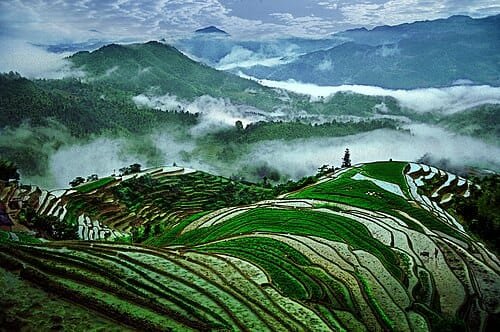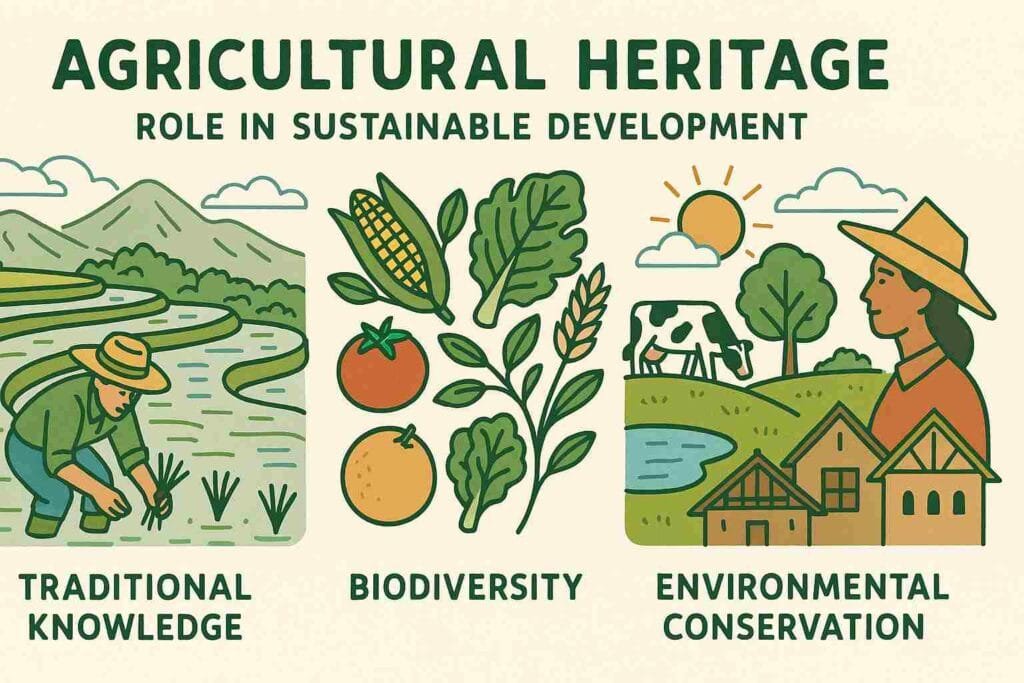1. Introduction to Agricultural Heritage

Agricultural heritage refers to the time-tested knowledge, practices, and systems developed by traditional societies for managing crops, livestock, and natural resources. Passed down through generations, these practices are closely tied to local cultures, climates, and ecosystems. They offer valuable insights for modern sustainable agriculture, food security, and environmental preservation. As agriculture evolves with new technologies, it becomes essential to preserve and learn from these ancient traditions, which have helped humanity thrive in diverse landscapes for thousands of years.
Summary of Agricultural Heritage
- Agricultural heritage embodies traditional farming knowledge and practices passed down through generations, reflecting a deep connection between communities and their land.
- These systems promote biodiversity and sustainable land use, offering valuable insights into resilient agricultural practices.
- Preserving agricultural heritage supports food security, climate resilience, and the revitalization of rural economies.
Table of Contents
2. Concept and Importance of Agricultural Heritage
2.1 Definition and Scope
Agricultural heritage includes indigenous knowledge systems, traditional crop varieties, local breeds of livestock, water management techniques, and community-based farming models. It reflects the co-evolution of humans with nature, emphasizing harmony rather than domination. The scope ranges from seed-saving practices and organic fertilizers to spiritual and cultural rituals connected to farming cycles.
2.2 Cultural and Historical Significance
Many agricultural traditions are intertwined with local festivals, myths, and social structures. They offer a window into the cultural identity and history of civilizations. Examples include rice terraces of the Philippines, step wells in India, and ancient irrigation systems like Qanats in Iran.
2.3 Ecological and Economic Relevance
These heritage systems often rely on low external inputs and are adapted to local ecosystems, making them ecologically sustainable. They also support livelihoods, especially in rural and indigenous communities, by enhancing food sovereignty and reducing dependence on industrial agriculture.
3. Key Components of Agricultural Heritage
3.1 Traditional Crop Varieties
Also known as landraces, these are local crop types developed through centuries of farmer selection. They are genetically diverse and resilient to local pests, diseases, and climate changes. Examples include indigenous rice varieties in Asia and maize in Mesoamerica.
3.2 Indigenous Livestock Breeds
Local breeds have evolved to thrive in specific environments. They are often disease-resistant and require minimal inputs, such as Gir cattle in India or the Andean llama.
3.3 Traditional Tools and Technologies
Simple, handmade tools designed for efficiency and sustainability, like ploughs, seed drills, and water wheels, still play a crucial role in small-scale farming systems.
3.4 Water Management Systems

Ancient methods like step wells, tanks, check dams, and rainwater harvesting have long ensured water availability in arid regions.
3.5 Soil Fertility Practices
Use of compost, green manure, crop rotation, and livestock integration has helped maintain soil health over centuries without chemical inputs.
3.6 Farming Festivals and Rituals
Agricultural activities are often accompanied by rituals celebrating harvest, sowing, and rain, reflecting a deep respect for nature and cosmic cycles.
4. Global Agricultural Heritage Sites (GIAHS)
4.1 Introduction to GIAHS
The FAO’s GIAHS initiative recognizes and promotes outstanding traditional agricultural systems worldwide. These systems are rich in biodiversity, indigenous knowledge, and resilient practices.
4.2 Examples of GIAHS
Examples include the rice-fish culture in China, Andean agriculture in Peru, and the Ifugao rice terraces in the Philippines. These sites are models of sustainable, integrated farming.
5. Preservation and Revitalization
5.1 Challenges
Modernization, land-use changes, youth migration, and market pressures threaten these traditional systems. Often, traditional knowledge is undervalued or lost.
5.2 Revitalization Strategies
Preserving agricultural heritage involves documenting practices, encouraging community participation, integrating traditional and scientific knowledge, and promoting agrotourism and niche markets for heritage products.
6. Role in Sustainable Development

Agricultural heritage contributes directly to sustainability by conserving biodiversity, enhancing climate resilience, promoting food security, and fostering inclusive rural development. These systems hold lessons for addressing modern agricultural challenges.
7. Conclusion
Agricultural heritage is a living testament to humanity’s ingenuity and adaptability in cultivating the land. It encompasses the traditional knowledge, practices, and systems developed over centuries by communities worldwide. These systems are characterized by their deep integration with local ecosystems, cultural practices, and biodiversity.
One of the most significant aspects of agricultural heritage is its contribution to biodiversity. Traditional farming methods often involve polyculture, crop rotation, and the use of indigenous seeds, which enhance genetic diversity and ecosystem resilience. This biodiversity is crucial for maintaining soil health, pest control, and adapting to climate change.
Moreover, agricultural heritage fosters a strong sense of cultural identity and community cohesion. Farming practices are intertwined with local traditions, festivals, and rituals, reinforcing social bonds and preserving cultural heritage. These practices also offer sustainable livelihoods, particularly in rural areas where modern agricultural methods may not be feasible.
In the face of globalization and industrial agriculture, preserving agricultural heritage has become increasingly important. It offers alternative models for sustainable agriculture that prioritize ecological balance, cultural preservation, and community well-being. By recognizing and supporting these systems, societies can promote food sovereignty, enhance resilience to environmental challenges, and ensure the survival of invaluable cultural practices.
To sum up, agricultural heritage is not merely a relic of the past but a vital resource for the future. Its preservation and revitalization are essential for fostering sustainable, inclusive, and resilient agricultural systems that can meet the challenges of the 21st century.
Frequently Asked Questions (FAQs)
What is agricultural heritage?
Agricultural heritage refers to the traditional farming knowledge, practices, and systems developed over centuries by communities worldwide. These systems are deeply integrated with local ecosystems, cultural practices, and biodiversity.
Why is agricultural heritage important?
It promotes biodiversity, enhances food security, and fosters community resilience. These systems offer sustainable models for agriculture that prioritize ecological balance and cultural preservation.
How does agricultural heritage contribute to sustainability?
Through practices like polyculture and crop rotation, agricultural heritage systems maintain soil health, conserve water, and reduce the need for chemical inputs, leading to more sustainable farming methods.
Related Articles

